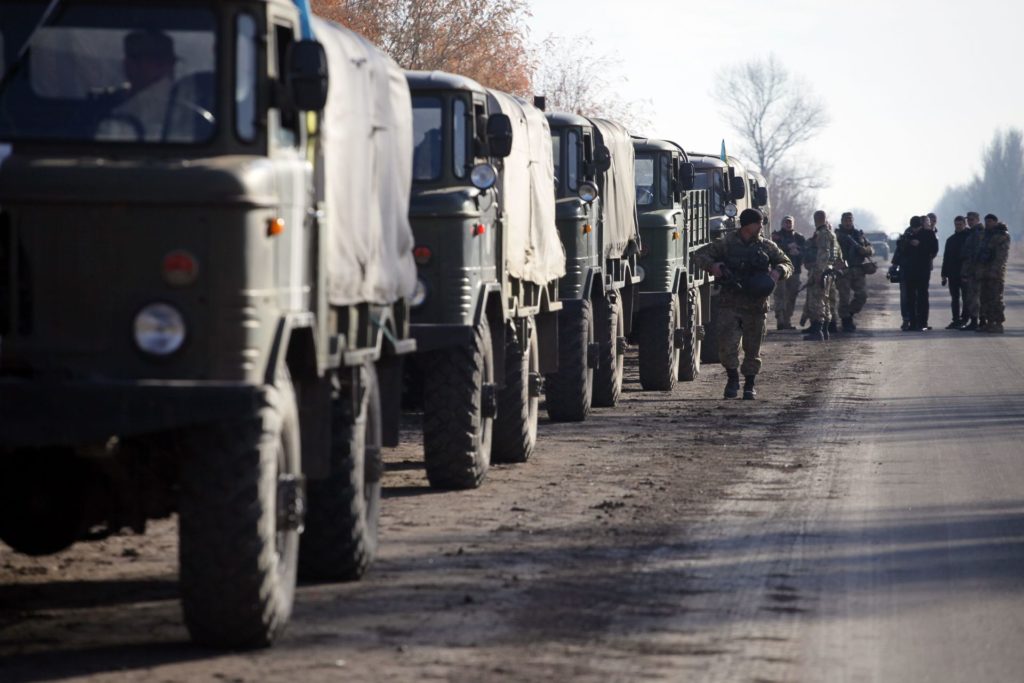In a 1939 BBC broadcast, Winton Churchill famously quipped that Russia was “a riddle, wrapped in a mystery, inside an enigma…”.
When looking at the news today, many may feel that his words haven’t aged a day. Indeed, the aggressive military posturing on the Ukrainian border leaves many questioning the true intent of the Kremlin. Is it planning to imminently launch an invasion of a scale not seen in Europe since the Second World War? Or perhaps this is just a palm-sweating episode of brinkmanship aimed to extract concessions from the west? Or, if anyone is willing to take what the Kremlin says at face value anymore, maybe this is indeed just a monumental training exercise (after all, no international laws are broken by moving troops around within sovereign borders).
I believe the answer lies in the second half – the seldomly quoted part – of Churchill’s famous assessment of Russia above: “…but perhaps there is a key. That key is Russian national interest”.
The borders of Europe that settled after the Cold War add nuance to the current situation, but there is in fact nothing new about what we are seeing. Rewinding back to its Ivan the Terrible origins, the Russian Empire has always been vulnerable to attacks by western powers through the North European Plain, which runs from the Baltic Sea in the north, to the Carpathian Mountains in the south.
A vast stretch of flat land that armies can roll through deep into the Russian heartland without much hindrance save the harsh Russian winter, the North European Plain has delivered a number of existential threats to Moscow: the Poles in 1605, the Swedes in 1708, Napoleon in 1812, and the Nazis in 1941.
In the aftermath of World War Two, the USSR padded this vulnerable artery with the freshly-minted communist satellite states, such as Romania, Hungary, Czechoslovakia, and Poland. The Iron Curtain served as a robust buffer zone for the delicate heart of the Soviet empire.
However, when the Cold War ended and the former communist states gravitated into the concurrent orbits of the EU and NATO, the pressure began to build. Still recuperating from the seismic recalibration that was the collapse of the USSR, Russia was not in a position to seriously challenge the admittance of the neighbouring Baltic states into NATO in 2004 (in fact, there was even a degree of cooperation between Russia and NATO back then).
Geographic security
However, ten years later, when Ukraine began to teeter into the EU orbit by way of the Association Agreement – a step towards EU membership – Russia saw this as an existential threat to its borders. If Ukraine were to become ingrained into the western sphere, then all of Russia’s European neighbours, with the exception of Belarus, would have conflicting agendas with Moscow. While the EU is not (yet) a military alliance, and NATO is not an offensive one, the Kremlin still views them as threats to its interests and abhors the idea of their members as next-door neighbours.
This was compounded by the geopolitical significance of the Crimean Peninsula, which provided Moscow with its only significant warm water port; as well as the symbolic significance of Ukraine, where the Kievan Rus', the foundation of the Russian empire, was established in the 9th century. On top of that, Vladimir Putin has not concealed his desire to restore Russia’s image as a global superpower, which would imply a concerted effort to regain lost territories.
Thus, one can begin to see the impetus behind the invasion of Crimea and the waging of a protracted proxy war in eastern Ukraine. The fog shrouding the present quagmire also begins to lift.
Earlier this week, Russian and American diplomats met in Geneva to avoid the current situation escalating into a full-blown invasion of Ukraine. The Kremlin has issued a contentious list of unmeetable demands from the west if it is to withdraw its forces from the border, including the guarantee that Ukraine and Georgia will never join NATO, and the withdrawal of NATO troops from its member states that were once part of the Warsaw Pact.
In essence, if met, these demands are designed to bolster Russia’s buffer zone on the North European Plain (and the Caucuses in the case of Georgia). Moscow insists that all conditions must be met in full if a détente is to ensue. So, when they are most certainly not fully met, we should not be surprised to see the mass mobilization of Russian forces into Ukrainian territory.
Where they will stop, or what resistance they will meet is still an open-ended question. Either way, be it through diplomacy or invasion, the Kremlin’s actions are in pursuit of an objective as old as Russia itself: geographic security – the crux of national interest.


